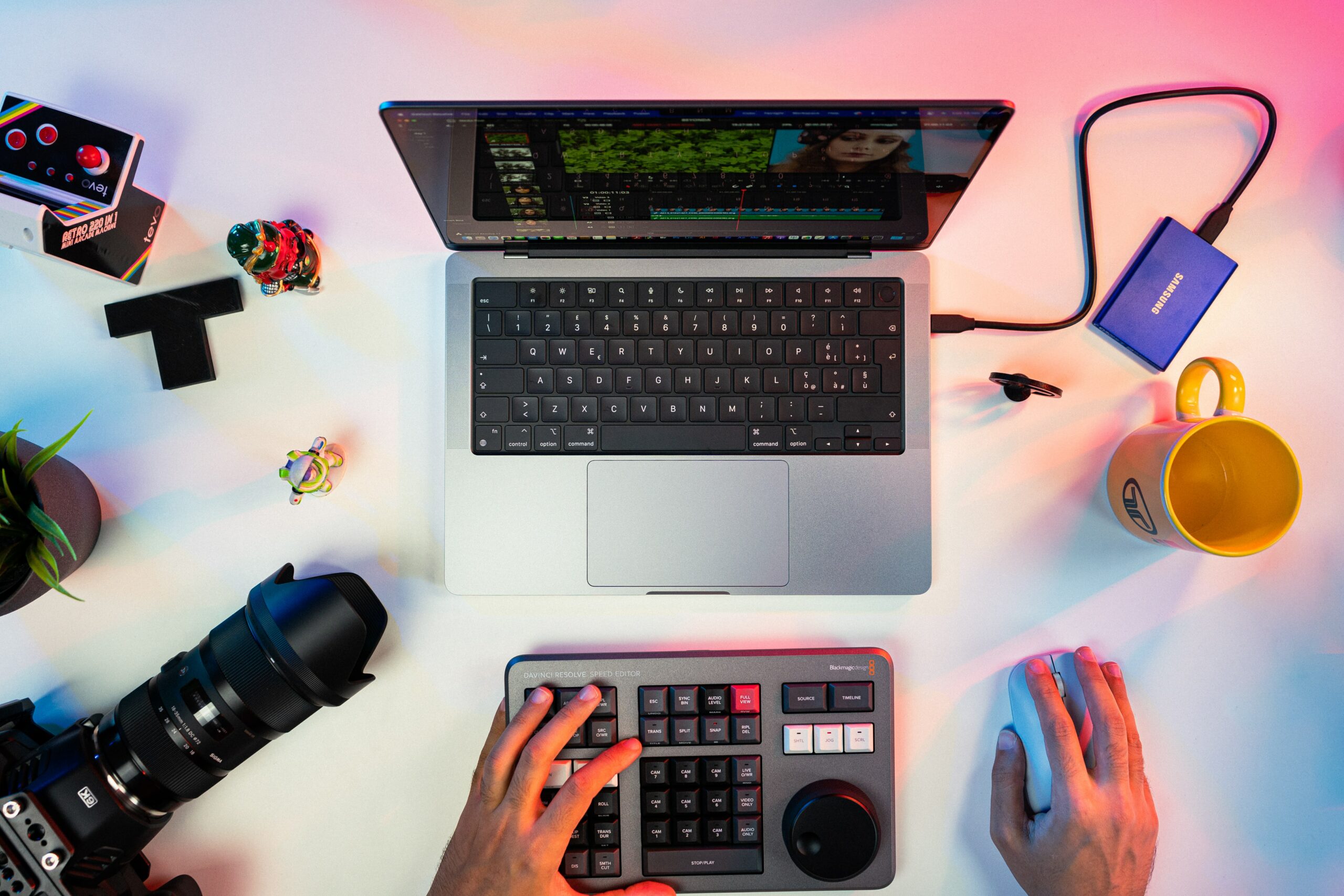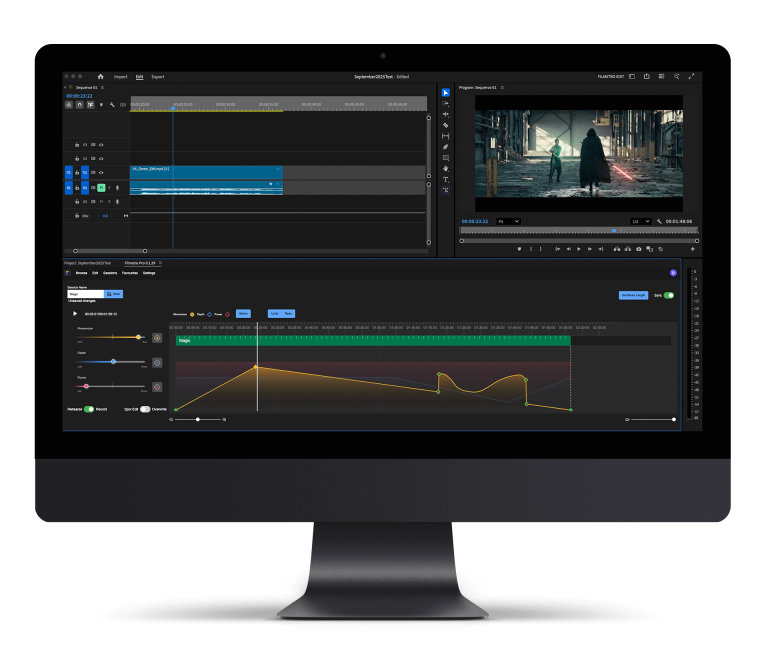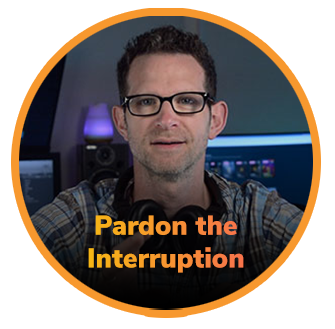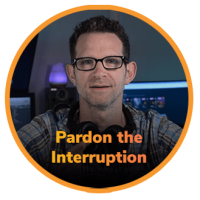We talked with Nick Shaheen about his film M.A.R.C and the processes he undertook during filming and post-production
Could you tell us about the film M.A.R.C?
M.A.R.C stands for Meteorologic Assisted Robotic Computer. It’s a story about a guy who wants to stay warm through the winter, so he does what any normal millennial would do; he goes on the interwebs and buys a drone that can control the weather through “quantum flux mechanics.”. However, as with any technological achievement the solution to one problem becomes the cause of several more problems.

Originally, the story was supposed to be about a cloud that falls in love with a guy and follows him everywhere, but our team decided it would be too expensive to render a volumetric 3D cloud for a 3-minute short film (and by team, I mean my computer wouldn’t allow it). While I was writing the story, originally titled “Cumulonim-love,” I had recently become obsessed with drones and drone footage, and I eventually came up with the concept of a personal weather drone.

How big was your team?
We had 4 people in total. Principal shots were done in 2 days in several different locations, and then I filmed some pick-ups by myself when no one was around to see me do weird things with a quadcopter and a leaf blower.

What equipment did you use?
Most of the scenes were shot using one light and a bounce so I needed a camera that handled well in low light. I was fortunate enough to know someone with a Sony A7S, but I was only able to use that for the “principal filming.” There are some shots that were filmed with an iPhone 6s and my old Canon T3i (600D). I also used Canon 18-55, 50 f 1.8, and 28mm f1.8 glass on this shoot. The trusty Manfrotto MVH502AH Tripod head & Manfrotto 055XPROB Tripod Legs were very handy on this shoot too. For audio recording we used the RODE NTG2 into the TASCAM DR 40D as our main shotgun microphone setup. We used the RODE VIDEOMICRO, plugged directly into the A7s as a backup. I did all my editing on my MacBook Pro – Late 2013. We have a love/hate relationship. That’s all I have to say about that.

All our lighting was motivated by the practicals we had in the scenes: toasters, drones, lightning and an antique television set. Many of the scenes were lit using a single on-camera LED light as a hair light, and then a bounce to fill in the dark areas.

How did you go about location scouting?
One of our scenes called for a wide shot with a flat landscape. We made some phone calls, used Google Maps, and eventually stumbled across a friend of a friend who was kind enough to let us film on his farm. That’s generally how we work – use your connections! The restaurant scene was a bit tricky. We only had a two-day window to film with Joe and Kelli. We reached out to a few local restaurants, but we didn’t have much luck. A robotic weather drone creating an indoor tornado is kind of a hard sell. So, we turned around some furniture, used a wide-open aperture to blur out the background and added some restaurant sound effects to make our friend’s apartment look like the kind of restaurant you’d take a Tinder date on.

What was your process in regards to setting up, finding the perfect shot, framing etc?
Most of the shots are motivated by me thinking “what’s the funniest way I can show this scene?”. I tried to give Joe (the main character) lots of headroom throughout the film to make him seem small and powerless, similar to what you see in “Mr. Robot” and Seth Worley’s “Real Gone.” I also had to be mindful of a drone about the size of a basketball hovering over Joe’s head.


When it comes to run and gun filming, sometimes you just have to work with the space and lights available to you. What you initially thought was going to be a slider shot turns into a handheld because you have to get in and get out quickly. That being said, I like to have depth in my shots. My personal preference is to have a foreground, mid-ground, and background.

I started planning for MARC in December and didn’t start filming until April. By that time, I had a ton of “test footage,” storyboards, a leaf blower, and a deadline. When you’re doing a VFX heavy project, you need to have clear objectives and deadlines, or you’ll just end up with a really cool show reel. No one could understand my scribbling but to me it was crystal clear.
How did you create the VFX shots? What software did you use?
MARC was created in Cinema 4D by cannibalizing several random 3D objects including a traffic light, a fan, and some random mechanical stuff. There were some pretty crude designs initially. After finding a design that met the needs of the story, I used Element 3D for compositing which saved loads of rendering time. The tornado was a challenge as well. I tried using particles in C4D and Trapcode Particular in After Effects, but eventually I had to use MAYA. I think the total render time was around 2 days which was incredibly painful.
The hardest part was animating MARC and figuring out the physics of a quadcopter. Drones have a unique way of flying. They don’t soar like planes. They can pan, tilt and hover. Blending MARC into the scenes was a challenge as well. I found that the easiest composites were scenes where we had very simple lighting setups. For example, in the shower scene there was basically a single light source over Joe’s head.

The snow and the rain took time and patience to figure out. What I learned was, if you want snow or rain in your scene, you’d better find a practical way to get snow or rain in your scene, and then augment it in post. For the snow, we used the sodium polyacrylate crystals found in diapers, and then I added falling snow in post with Trapcode Particular.
Principal filming took 2 days of around 6 hours filming each day, but there were several pickups filmed over the following weeks. Post production was a whole different story. It took a little over a month to animate the 3 commercials, composite MARC into each shot, and add the little things like an antique television, an iPhone app, snow, rain and tornadoes. I’m exhausted just thinking about it.
We called in a lot of favors and took many trips to the Dollar Store. This was a passion project. Sometimes you have an idea in your head, and you can’t put it down until you just see it through.
What was your post-production process like?
The cartoons/diagrams were all made using Illustrator and Photoshop. I used some Minimalist style movie posters for my references.

MARC was designed in Cinema 4D and composited using Element 3D in After Effects. Editing and Color grading were done in Premiere Pro using Film Riot’s LUT pack. For audio, I used Adobe Audition.
The music was very important. I wanted something that complemented the pacing of the film. At the time, Filmstro was only a standalone app in Beta version. I think I looked under the comedy music tab and sampled every song until I came across “Pisa,” which became the theme throughout the entire short (check out Filmstro’s royalty free music library). It really tied the room together. After some tweaks and editing, it was almost as though the song was written for MARC.
![]()
We put a lot of time into everything we filmed, so I wanted to keep as much of the footage as possible but pacing is everything, especially in comedy. I usually watch my films with a friend and gauge their responses. Did they get bored? Should I cut a scene shorter? Did they laugh when I wanted them to laugh? etc. I take some notes and after several days of not showering or speaking to another human being, I hopefully emerge like a monarch butterfly with the “finished project.” No film project is ever really finished, though. You guys know what I’m talking about.
Is there anything you would have done differently if you could shoot the same video again?
Pacing is always a challenge, and if I could speed up some of the slower moments I would. Also, I would have tried to complete the filming earlier on to give myself more time in post. I am proud of what we did, but we definitely had to take some shortcuts to finish on time.









